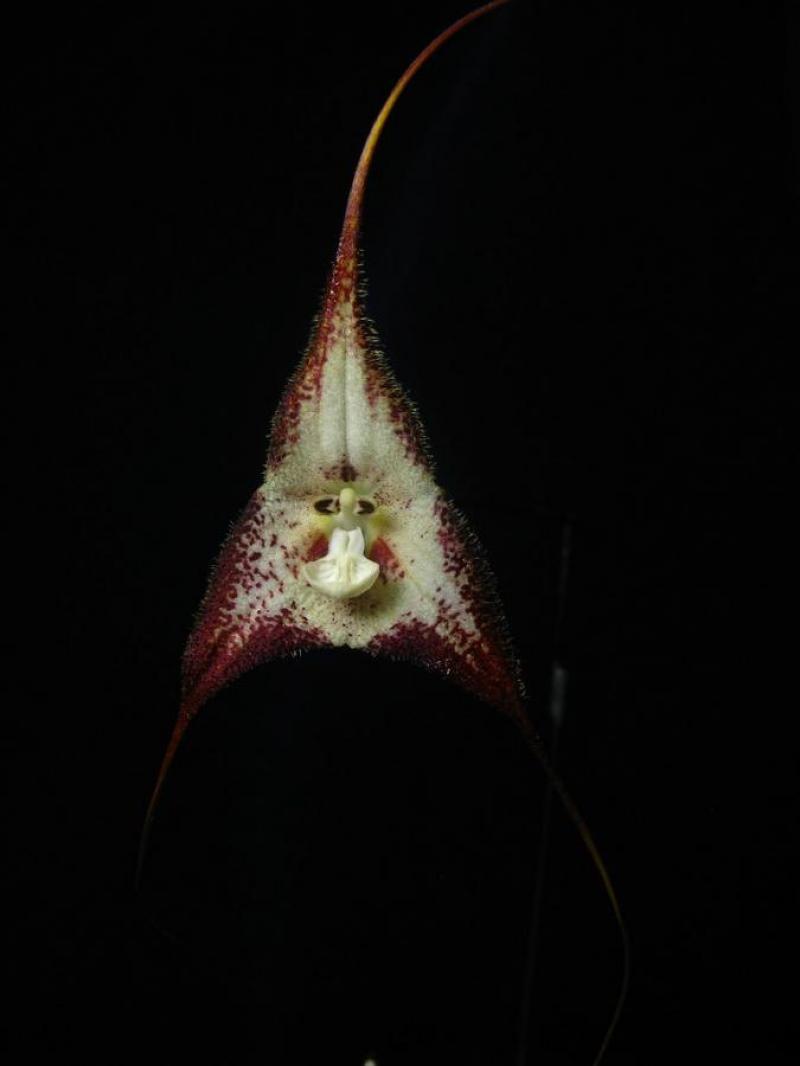Dracula tubeana
Also known as: The Tubed or Masdevallia tarantula Dracula tarantula in the subfamily: Epidendroideae
Native to: Ecuador
General Information
The Tubed is a miniature sympodial cool to warm growing orchid belonging to the sub family Epidendroideae native to Ecuador.
Plant Description
Sympodial. Grows to 25cm. Each new growth has a single leathery erect leaf that grows to 2.5-21cm long. Pseudobulbs grow to 2-4cm
Flowers
Numerous blossoms appear during Autumn and Spring
Blooming Season
- Autumn
- Spring
Substrate(s)
- Coarse
- Charcoal
- Spaghnum Moss
- Perlite
Climate
The orchids are well adapted for hot weather, accompanied by sporadic, unpredictable rainfall and a generally dry climate. They can tolerate a lot of neglect as they are quite used to it, however they can be prone to underwatering and may collapse in cold, wet weather.
For this reason it's best to dedicate a sheltered, protected area for them where the watering can be controlled, such as a corner of a greenhouse or in a sheltered balcony. They can also do well hung near the roof of a shadehouse or sheltered greenhouse where they receive the extra heat but not as much water as other plants.
Grows at low to high elevations. Rainfall ranges from 18mm to 173mm per day, heaviest in October and lightest in January. Humidity ranges from 60% to 81%, highest in October and lowest in February. Temperature ranges from 12C to 27C, highest in February (13C to 27C) and lowest in January (12C to 24C).Watering
These orchids prefer a constant supply of moisture, with a slight drying out between waterings. Saucers can be placed under pots to retain moisture during hot weather, however the saucers should be removed or let to dry every 1-2 weeks to prevent rot. Keep an eye on the plant especially in hot weather and look for cues of under/overwatering and adjust accordingly.
Fertiliser
Apply liquid based fertiliser per recommended directions. They can benefit from a high phosphate fertiliser leading up to flowering season, followed by a high nitrogen fertiliser when new growth appears, and a balanced fertiliser in other times. These orchids can also tolerate slow release fertiliser applied 1-2 pellets per cup (250ml) of media.
Apply fertiliser regularly at half strength year round. Use a high Nitrogen fertiliser during Spring and Summer. Use a high Phosphorous fertiliser during Summer. Reduce fertiliser when plant is dormant during Spring.Potting
Use water retentive media such as moss to prevent roots from drying out quickly This plant does very well in baskets or suspended pots This plant does well mounted. Repotting is best done annually.




